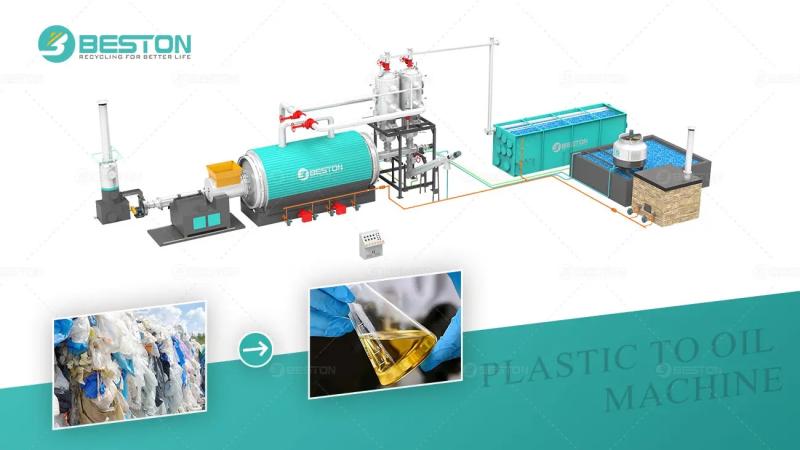Optimized Configuration Options for Small Pyrolysis Plants

A diverse configuration scheme for small pyrolysis plant offers a flexible and scalable approach for managing various types of waste, particularly for small businesses or industries looking to embrace sustainable waste management practices. These small pyrolysis plants, designed with versatility in mind, can handle a range of materials such as plastic, rubber, oil sludge, and biomass, converting them into valuable products like oil, gas, and carbon black. Understanding the various configuration options is crucial for optimizing plant performance and ensuring that operations align with both environmental goals and economic viability.
Customized Reactor Designs
One of the most significant factors in configuring a small pyrolysis plant is the reactor design. Different reactor types offer unique advantages, and choosing the right one depends on the type of waste being processed and the desired outputs. Common options include batch reactors, semi-continuous reactors, and fully continuous reactors. Batch reactors are typically cost-effective and suitable for smaller capacities, while semi-continuous and continuous reactors can handle larger volumes of waste with higher efficiency, though they come at a higher initial investment cost. Depending on the specific needs of the business, a batch reactor may be ideal for lower capacity and flexibility, while a continuous reactor suits those aiming for higher throughput and continuous operation.
Fuel Type and Energy Recovery Systems
The configuration scheme for a small pyrolysis plant also includes decisions on fuel sources and energy recovery systems. Pyrolysis plants typically rely on electricity or gas to power the reactors, but integrating an energy recovery system can significantly reduce operational costs. This system captures the syngas produced during the pyrolysis process and reroutes it to fuel the plant's operations, creating a more energy-efficient and cost-effective process. This type of self-sustaining energy model is ideal for small businesses seeking to minimize their energy costs while reducing their environmental footprint.
Modular and Skid-Mounted Configurations
To enhance flexibility and mobility, small pyrolysis plants can be designed in modular or skid-mounted configurations. These setups allow businesses to easily relocate the plant or expand capacity as needed. Modular units are ideal for companies with limited space or those operating in multiple locations, while skid-mounted plants offer the advantage of mobility combined with high performance. Both options allow for easy installation and can be tailored to fit specific site requirements, ensuring that businesses can scale operations without needing to invest in a complete plant overhaul.
Material Handling and Pre-Treatment Options
Before the waste is fed into the pyrolysis reactor, it often undergoes a pre-treatment process, which could involve shredding, drying, or sorting to optimize the feedstock. Small pyrolysis plants may incorporate various types of material handling equipment to efficiently manage the input waste. For instance, waste plastics may need to be shredded into smaller pieces to improve the efficiency of the pyrolysis process, while biomass materials might require drying to reduce moisture content. The configuration can include automated systems for feedstock preparation to ensure consistency and reduce labor costs.
Safety Features and Automation
Ensuring safe and efficient operation is crucial, especially for smaller-scale pyrolysis plants that may not have the same resources as larger industrial plants. Safety features such as pressure relief valves, fire suppression systems, and high-temperature sensors are often incorporated into the design. Additionally, automation plays a key role in minimizing human intervention and enhancing plant reliability. Automated systems can control temperature, pressure, and other parameters, reducing the likelihood of human error and ensuring the pyrolysis process runs smoothly and safely.
Environmental Impact and Emission Control
An essential part of any small pyrolysis plant configuration is the inclusion of emission control technologies. While pyrolysis is generally considered a cleaner alternative to traditional incineration methods, the process still produces gases that need to be properly managed. The plant configuration should include effective gas treatment systems, such as scrubbers and condensers, to ensure that emissions are kept within environmentally safe limits. Additionally, using high-quality reactors with advanced insulation and sealing technology can help minimize heat loss and air pollution, further improving the environmental credentials of the operation.
Output Products and Market Strategy
The final configuration of the plant should also be aligned with the desired end products, whether it’s oil, gas, carbon black, or biochar. Small pyrolysis plants can be tailored to produce specific outputs depending on market demand and profitability. For example, a business focused on producing biofuels might configure its plant to maximize oil output, while a company looking to supply the growing carbon black market could optimize the reactor and collection systems for maximum yield of that product. Understanding market demand and tailoring the plant configuration accordingly ensures that the investment in pyrolysis technology is both financially and environmentally sound.
In conclusion, the diverse configuration scheme for a small pyrolysis plant provides businesses with flexibility, cost-effectiveness, and sustainability. Whether the goal is to process waste plastics, rubber, or organic material, various reactor designs, energy recovery options, and pre-treatment processes can be combined to suit the unique needs of each operation. With an emphasis on safety, automation, and environmental responsibility, small pyrolysis plants offer a valuable solution for managing waste while generating profit. Properly configured, these plants can be a stepping stone to a more sustainable and circular economy.

Comments